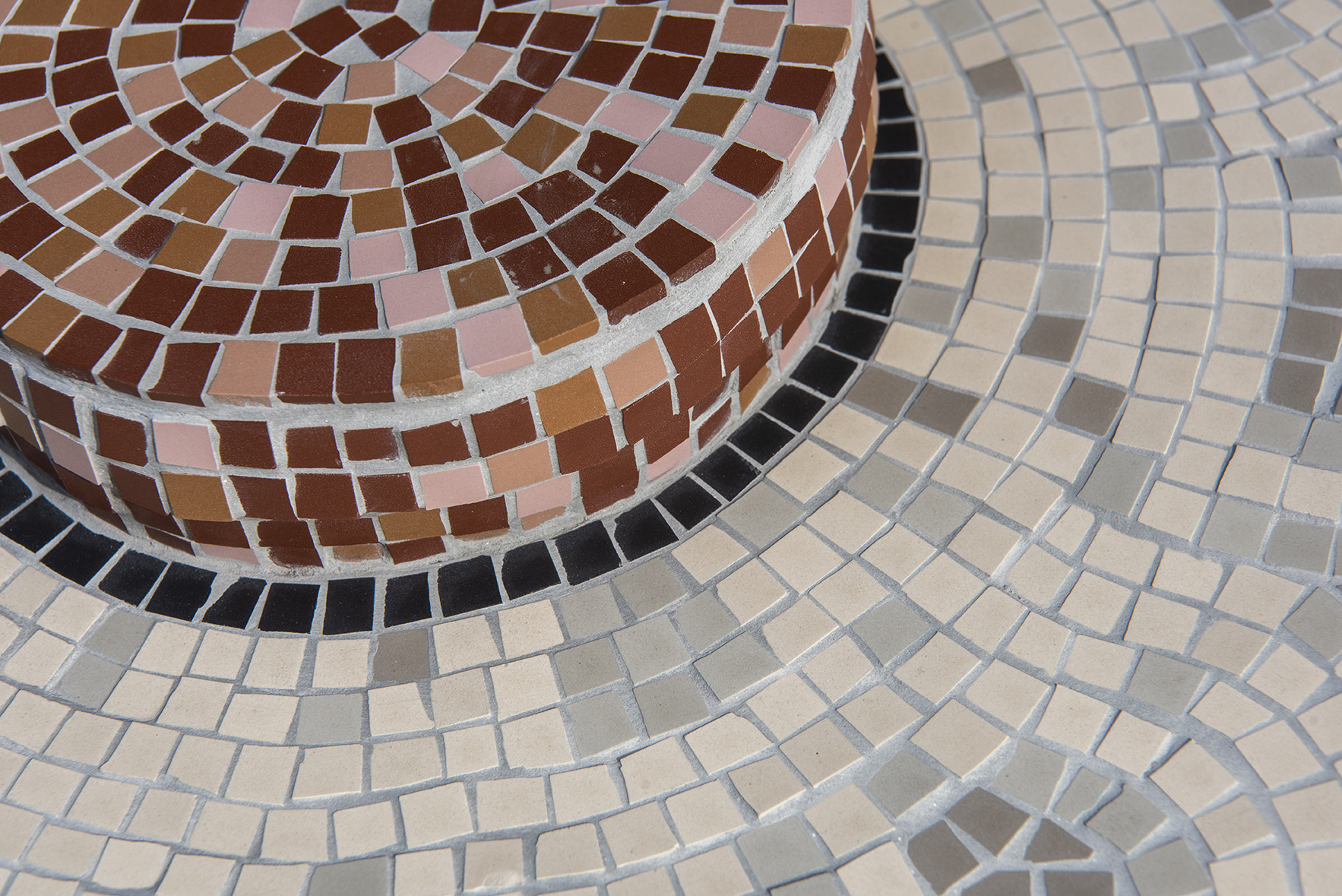




The Reset Button
Hand cut porcelain tiles and grout on board, 56cm x 36cm x 14cm, 2022
The Reset Button is an object to be sought out and found. Usually somewhat hidden in location so as not to reset by accident. To reset seems to imply a fresh start, a new beginning. To reset a game, a device, a place, the day, a moment. There is a permanence to the idea – are you sure you want to do this? It is fraught for this reason; on the other side, a chance to restart can promise hope and opportunity, a fresh start. The term reset has some uneasy associations in covid times, ‘the great reset’ a phrase used by technocrats and populists alike to describe the coordinated policy and monetary response to the coronavirus pandemic. The reset button here tries to represent all these things: subtle, unassuming, hard to locate, multi-faceted, 2022.
Shown here in State of Play, curated by Brooke Benington at Canary Wharf, London.
Photo: Sean Pollock